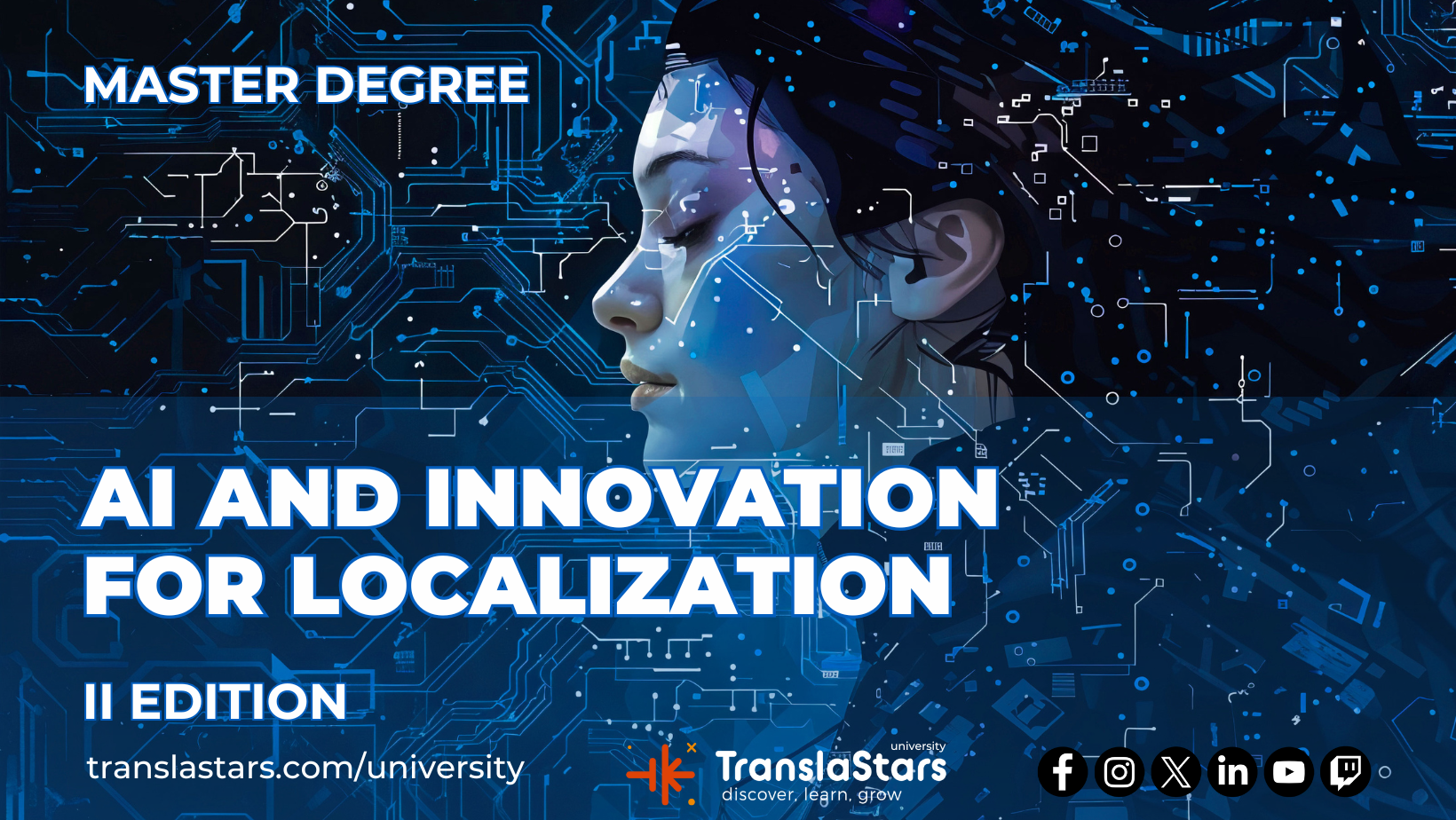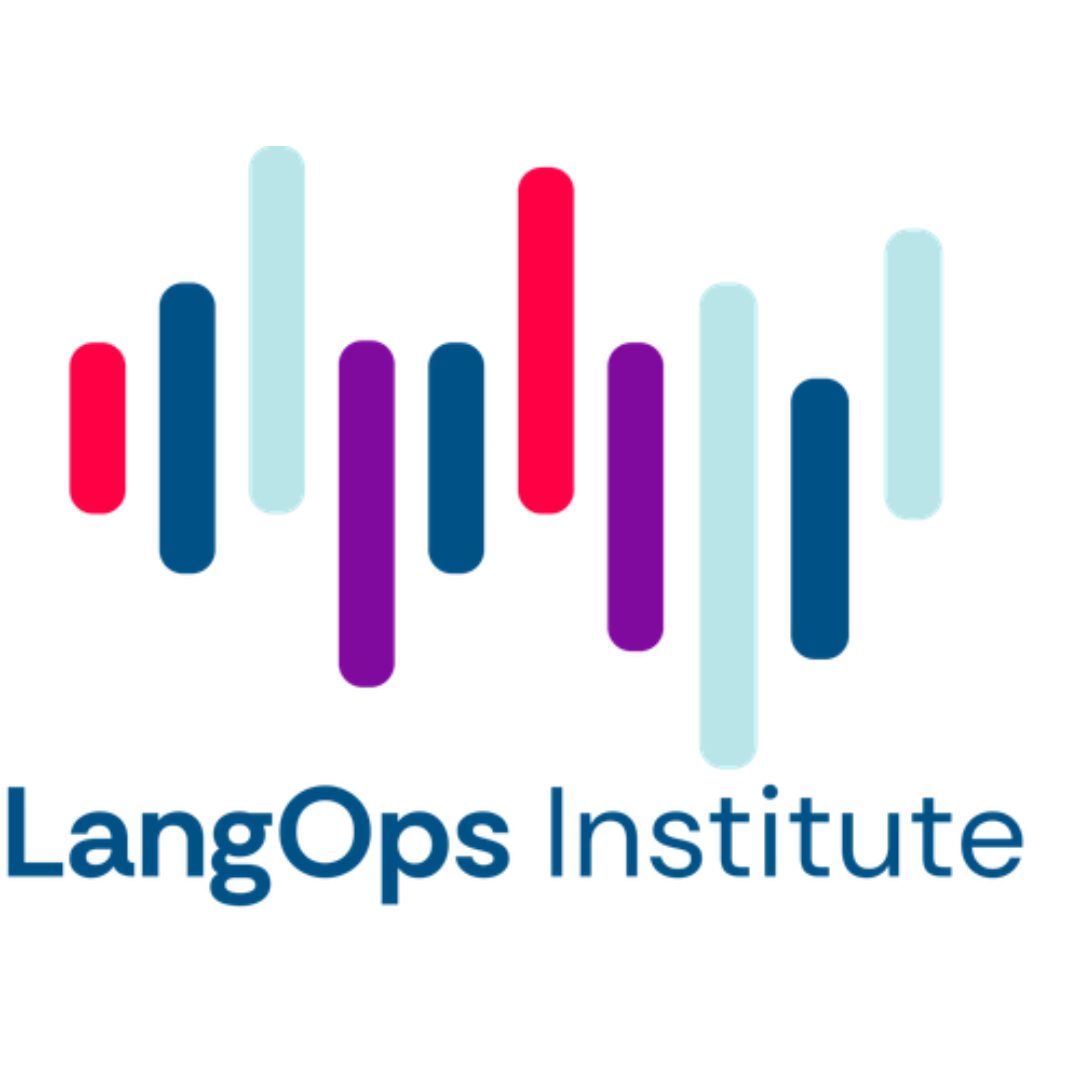Artificial Intelligence is rapidly transforming localization, and for professionals in the field, this shift isn’t just about technology; it’s about career growth.
From Agentic AI and LangOps to the power of knowledge graphs, AI tools are helping localization teams work smarter, scale faster, and deliver more impactful multilingual experiences.
In this article, we’ll explore 10+ actionable tips to future-proof your career in localization with AI.
Drawing on expert insights and resources like the Shift Left Podcast by Blackbird.io or the Agile Podcast by CrowdIn, hosted by Stefan Huyghe, you’ll learn how to stay ahead of industry trends, adopt the right tools, and position yourself at the forefront of the AI-driven localization revolution.
From Agentic AI and LangOps to the power of knowledge graphs, AI tools are helping localization teams work smarter, scale faster, and deliver more impactful multilingual experiences.
In this article, we’ll explore 10+ actionable tips to future-proof your career in localization with AI.
Drawing on expert insights and resources like the Shift Left Podcast by Blackbird.io or the Agile Podcast by CrowdIn, hosted by Stefan Huyghe, you’ll learn how to stay ahead of industry trends, adopt the right tools, and position yourself at the forefront of the AI-driven localization revolution.
1. Why AI Matters for Localization Careers
The localization industry is undergoing one of the most profound transformations in its history, and Artificial Intelligence sits at the center of this change.
Once seen as a supporting tool for translation, AI now powers entire workflows, encompassing content creation and quality assurance, as well as terminology management and cultural adaptation.
For localization professionals, this evolution represents both a challenge and an opportunity. Those who adapt and learn how to integrate AI into their day-to-day work can boost efficiency, take on more strategic roles, and position themselves as indispensable in a rapidly evolving market.
In short, mastering AI isn’t just about keeping up. It’s about unlocking new career paths and shaping the future of global communication.
And, speaking of the future, we’re here to help you boost your AI skills in Localization with the II edition of our Master in AI and Innovation for Localization, coming up next September.
Join our localization experts and learn how to take advantage of the use of AI in localization and apply new processes and strategies to your localization program and tasks.
Once seen as a supporting tool for translation, AI now powers entire workflows, encompassing content creation and quality assurance, as well as terminology management and cultural adaptation.
For localization professionals, this evolution represents both a challenge and an opportunity. Those who adapt and learn how to integrate AI into their day-to-day work can boost efficiency, take on more strategic roles, and position themselves as indispensable in a rapidly evolving market.
In short, mastering AI isn’t just about keeping up. It’s about unlocking new career paths and shaping the future of global communication.
And, speaking of the future, we’re here to help you boost your AI skills in Localization with the II edition of our Master in AI and Innovation for Localization, coming up next September.
Join our localization experts and learn how to take advantage of the use of AI in localization and apply new processes and strategies to your localization program and tasks.

2. Stay Curious About AI by Monica Albini
As AI reshapes the localization industry, professionals are finding new ways to align their skills with technology while staying true to their passion for language. Monica Albini, Junior Researcher in AI and EIC-gen, emphasizes that thriving in this evolving landscape requires more than just technical know-how.
It’s about mindset, adaptability, and a commitment to continuous learning. Below are three guiding principles provided by Monica to help localization professionals navigate change and seize new opportunities:
It’s about mindset, adaptability, and a commitment to continuous learning. Below are three guiding principles provided by Monica to help localization professionals navigate change and seize new opportunities:
You can also learn more about what she thinks about the topic by reading her article for Think Tank, Letter to the Future Translators (Including Seven New Skills that Might Help You.
3. Agentic AI
Agentic AI marks a significant departure from traditional reactive AI models. Unlike traditional AI models that passively generate outputs when prompted, Agentic AI can take initiative, perform tasks autonomously, and adapt to complex workflows. For localization professionals, this means moving beyond using AI as a simple translation engine to leverage it as a true collaborator.
In the localization sector, this translates into dynamic, intelligent systems that go beyond mere translation. The blog post “What is Agentic AI and How Does It Change the Localization Process” from Crowdin explains that Agentic AI enables “agentic localization,” where content is adapted early in the creation process, accelerating time-to-market and transforming static workflows into scalable, context-aware ecosystems. Similarly, the POEditor blog emphasizes how Agentic AI systems operate autonomously, make decisions, adapt based on feedback, and continuously refine output, ushering in a new era of localization efficiency.
For localization professionals, Agentic AI offers:
In the localization sector, this translates into dynamic, intelligent systems that go beyond mere translation. The blog post “What is Agentic AI and How Does It Change the Localization Process” from Crowdin explains that Agentic AI enables “agentic localization,” where content is adapted early in the creation process, accelerating time-to-market and transforming static workflows into scalable, context-aware ecosystems. Similarly, the POEditor blog emphasizes how Agentic AI systems operate autonomously, make decisions, adapt based on feedback, and continuously refine output, ushering in a new era of localization efficiency.
For localization professionals, Agentic AI offers:
- Enhanced productivity: Automates repetitive and rule-based tasks, from consistency checks to formatting, freeing humans for higher-level work.
- Strategic oversight: As AI handles operational tasks, professionals can shift toward roles in prompt engineering, quality assurance, and AI supervision.
- Early-stage localization: Content becomes global-ready from inception, rather than being retrofitted after translation.
- Career differentiation: Mastery of AI-driven workflows and orchestration positions you as an innovator and leader in the field.
4. Never Stop Learning by Dorota Pawlak
Technology may be transforming localization at lightning speed, but human adaptability remains the true differentiator. Dorota Pawlak, Localization & Gen AI Trainer, highlights that while embracing AI is essential, long-term success depends just as much on continuous learning, creativity, and empathy.
By blending technological fluency with timeless professional skills, localization specialists can stay ahead of change, unlock new
By blending technological fluency with timeless professional skills, localization specialists can stay ahead of change, unlock new
5. LangOps
LangOps, short for Language Operations, is the next evolutionary step in localization, offering a holistic, cross-functional approach that goes beyond traditional translation workflows. It brings translators, linguists, engineers, and AI systems into one streamlined, collaborative ecosystem.
For localization professionals, LangOps offers a powerful framework to harness AI at scale. By centralizing workflows, teams can deploy AI-driven translation, quality assurance, and terminology management across entire organizations rather than scattered projects.
This not only improves efficiency but also ensures consistency in voice, style, and brand messaging across multiple markets.
For localization professionals, LangOps offers a powerful framework to harness AI at scale. By centralizing workflows, teams can deploy AI-driven translation, quality assurance, and terminology management across entire organizations rather than scattered projects.
This not only improves efficiency but also ensures consistency in voice, style, and brand messaging across multiple markets.

The concept was first articulated by João Graça, co-founder and CTO of Unbabel, in his 2021 Forbes article “Why LangOps Is The Next Frontier.” Since then, the discipline has been further advanced by initiatives such as the LangOps Institute and LangOps (the organization), both of which promote research, best practices, and professional development in this emerging field.
Industry leaders like Arthur Wetzel and Diego Cresceri have also contributed significantly to shaping the conversation around LangOps, highlighting its potential to transform localization into a strategic business function.

Adopting a LangOps mindset means shifting from task-based execution to strategic orchestration. Professionals who learn how to integrate AI tools into LangOps platforms gain visibility across the full content lifecycle, positioning themselves as vital connectors between language, technology, and business strategy.
In short, LangOps isn’t just about efficiency. It’s about elevating the role of localization from support to strategy.
And if this section is not enough for you, we invite you to take a look at our latest carousel, “10+ Reasons Why Language Operations is a Career Changer”, with the contribution of Diego Cresceri and Edwin Trebels.
6. Keep Up with AI Trends by Almira Zainutdinova
As AI reshapes how content is created and managed, localization professionals have a unique advantage: their skills already sit at the intersection of language, culture, and quality.
Almira Zainutdinova, AI Trainer and Human-in-the-Loop, stresses that by reframing these capabilities, whether in QA, editing, or cultural adaptation, localization specialists can position themselves as invaluable contributors to AI-driven content workflows.
Rather than viewing AI as a disruption, she encourages professionals to see it as an evolution: a chance to apply existing strengths like feedback, moderation, and multilingual expertise in new, high-impact ways.
Almira Zainutdinova, AI Trainer and Human-in-the-Loop, stresses that by reframing these capabilities, whether in QA, editing, or cultural adaptation, localization specialists can position themselves as invaluable contributors to AI-driven content workflows.
Rather than viewing AI as a disruption, she encourages professionals to see it as an evolution: a chance to apply existing strengths like feedback, moderation, and multilingual expertise in new, high-impact ways.
7. Knowledge Graphs
Knowledge graphs are powerful tools that organize information in a way that machines and humans can easily understand.
By mapping relationships between concepts, terms, and content elements, knowledge graphs enable AI systems to deliver more accurate translations, context-aware suggestions, and consistent messaging across languages and platforms.
For localization professionals, knowledge graphs provide a framework to connect terminology, style guides, and cultural nuances with AI-driven workflows. Instead of relying solely on linear translation memories or glossaries, teams can use structured, interconnected data to ensure that content is accurate, coherent, and culturally relevant at scale.
Industry experts like Edwin Trebels, founder of LangOptima, have been actively exploring how knowledge graphs can transform localization workflows. His work illustrates how structured data can unlock smarter automation, improve translation quality, and make global content truly adaptive to diverse markets.
In practice, integrating knowledge graphs into localization processes can help professionals:
Understanding and leveraging knowledge graphs positions localization specialists as strategic partners in AI-driven content operations, bridging the gap between technology, language, and business objectives.
By mapping relationships between concepts, terms, and content elements, knowledge graphs enable AI systems to deliver more accurate translations, context-aware suggestions, and consistent messaging across languages and platforms.
For localization professionals, knowledge graphs provide a framework to connect terminology, style guides, and cultural nuances with AI-driven workflows. Instead of relying solely on linear translation memories or glossaries, teams can use structured, interconnected data to ensure that content is accurate, coherent, and culturally relevant at scale.
Industry experts like Edwin Trebels, founder of LangOptima, have been actively exploring how knowledge graphs can transform localization workflows. His work illustrates how structured data can unlock smarter automation, improve translation quality, and make global content truly adaptive to diverse markets.
In practice, integrating knowledge graphs into localization processes can help professionals:
- Improve AI-assisted translation accuracy by providing context and relationships.
- Maintain consistency across multilingual projects.
- Enable smarter automation of repetitive tasks, allowing focus on higher-level strategy.
- Make content reusable and adaptable for new markets and formats.
Understanding and leveraging knowledge graphs positions localization specialists as strategic partners in AI-driven content operations, bridging the gap between technology, language, and business objectives.
8. Enhance Your Linguistic Skills by Francesco Saina
In a fast-evolving localization landscape, staying relevant requires more than technical proficiency, it demands curiosity, adaptability, and a strong foundation in language and culture.
Francesco Saina, translator, interpreter, and researcher, emphasizes that professionals must continuously educate themselves, critically evaluate emerging technologies, and leverage them strategically.
At the same time, maintaining and strengthening linguistic and intercultural skills ensures that the human element of communication remains central.
Finally, embracing flexibility and openness to change, while staying true to your passions, is key to thriving in an AI-driven industry.
Francesco Saina, translator, interpreter, and researcher, emphasizes that professionals must continuously educate themselves, critically evaluate emerging technologies, and leverage them strategically.
At the same time, maintaining and strengthening linguistic and intercultural skills ensures that the human element of communication remains central.
Finally, embracing flexibility and openness to change, while staying true to your passions, is key to thriving in an AI-driven industry.
9. Shift Left Podcast by Blackbird.io
The Shift Left Podcast by Blackbird.io offers a deep dive into how AI, automation, and modern technology are reshaping industries, including localization.
The podcast explores cutting-edge strategies for integrating AI into workflows, improving operational efficiency, and staying ahead in fast-moving markets. For localization professionals, it’s a valuable resource to understand emerging trends, learn from industry experts, and discover practical tips for applying AI and automation in real-world projects.
Episodes cover topics ranging from knowledge management and AI orchestration to innovative approaches in content quality and translation processes, making it an essential guide for anyone aiming to future-proof their career.
Watch the trailer episode on YouTube here.
The podcast explores cutting-edge strategies for integrating AI into workflows, improving operational efficiency, and staying ahead in fast-moving markets. For localization professionals, it’s a valuable resource to understand emerging trends, learn from industry experts, and discover practical tips for applying AI and automation in real-world projects.
Episodes cover topics ranging from knowledge management and AI orchestration to innovative approaches in content quality and translation processes, making it an essential guide for anyone aiming to future-proof their career.
Watch the trailer episode on YouTube here.
10. Balancing AI Adoption with Caution and Creativity by Ekaterina Chashnikova
AI is transforming localization, but it’s not without its flaws. Ekaterina Chashnikova, medical writer and content creator, emphasizes the importance of balancing curiosity with caution, learning how AI works, understanding its limits, and avoiding blind overreliance.
At the same time, she encourages professionals to embrace new opportunities, from emerging roles like AI tutors and cultural consultants to expanded service offerings in content creation, multimedia, and beyond.
With the right mindset, AI becomes less of a threat and more of a catalyst for career growth and diversification.
At the same time, she encourages professionals to embrace new opportunities, from emerging roles like AI tutors and cultural consultants to expanded service offerings in content creation, multimedia, and beyond.
With the right mindset, AI becomes less of a threat and more of a catalyst for career growth and diversification.
11. Let AI Handle the Routine, You Handle the Impact by Morana Peric
Not all tasks in localization require the same level of creativity or strategic thinking.
Morana Peric, a Localization and UX expert, suggests using AI as a supportive tool for routine, repetitive work, thereby freeing up valuable time and energy for projects that truly demand human expertise.
By letting technology handle the mundane, localization professionals can position themselves as cultural experts and creative wordsmiths, crafting messages that resonate authentically with global audiences.
Morana Peric, a Localization and UX expert, suggests using AI as a supportive tool for routine, repetitive work, thereby freeing up valuable time and energy for projects that truly demand human expertise.
By letting technology handle the mundane, localization professionals can position themselves as cultural experts and creative wordsmiths, crafting messages that resonate authentically with global audiences.
Conclusion
The intersection of AI and localization is no longer a distant possibility, it’s today’s reality. From leveraging Agentic AI and LangOps frameworks to structuring content with knowledge graphs, professionals have unprecedented tools to elevate their impact. As our experts have shown, success in this evolving landscape comes from a combination of continuous learning, flexibility, and the ability to integrate AI intelligently while keeping the human touch.
For localization specialists ready to take the next step, structured learning is essential. That’s why we offer a wide offer for you to explore new AI and localization opportunities.
For localization specialists ready to take the next step, structured learning is essential. That’s why we offer a wide offer for you to explore new AI and localization opportunities.
- II Edition of the Master in AI and Innovation for Localization – A comprehensive course designed to help professionals harness AI tools, streamline workflows, and innovate across the localization process.
If you liked this article, read also:





